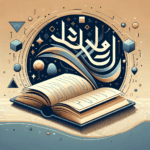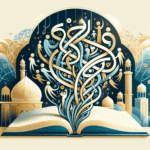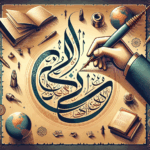The Role of the Arabic Alphabet in Preserving History
Welcome to a fascinating journey through time! Today, we’re diving into the captivating world of the Arabic alphabet and its crucial role in preserving history. From ancient manuscripts to modern-day texts, the Arabic script has been a vital tool in documenting and safeguarding cultural heritage. 🏺
Table of Contents
1. Introduction: The Magic of the Arabic Alphabet
2. A Brief History of the Arabic Script
3. The Arabic Alphabet as a Historical Guardian
4. Modern Relevance of the Arabic Alphabet
5. Conclusion: A Timeless Legacy
6. FAQs
Introduction: The Magic of the Arabic Alphabet
The Arabic alphabet is more than just a collection of letters; it’s a bridge connecting past and present, allowing us to peer into the lives of those who came before us. This captivating script, with its elegant curves and dots, has been a steadfast recorder of history for centuries. Let’s explore how this ancient alphabet has played a pivotal role in preserving history. 📜✨
A Brief History of the Arabic Script
The Arabic alphabet, with its origins in the Nabataean writing system, evolved around the 4th century CE. Over time, it became the primary script for writing the Arabic language and spread across the Middle East and North Africa. Its versatility and adaptability allowed it to be used for various languages, further solidifying its importance in documenting historical events and cultural practices. 🌍
The Arabic Alphabet as a Historical Guardian
One of the most significant roles of the Arabic alphabet has been its use in recording religious texts, such as the Quran. These sacred texts have been meticulously preserved, providing a window into the theological and philosophical thoughts of the time. Additionally, historians and scholars used the Arabic script to document scientific discoveries, literary works, and historical events, ensuring that knowledge was passed down through generations. 📚🔍
Furthermore, many ancient manuscripts and documents, written in Arabic, remain crucial resources for researchers today. These texts offer invaluable insights into the cultural and social dynamics of past civilizations, helping us understand the evolution of human societies. 🏛️
Modern Relevance of the Arabic Alphabet
In today’s digital age, the Arabic alphabet continues to be a vital part of cultural identity and expression. It is used by millions of people worldwide, not only for communication but also for artistic expression and cultural preservation. The script’s enduring presence in modern media, literature, and technology showcases its adaptability and ongoing relevance. 🌐
The Arabic script is also a source of pride and a symbol of unity for Arabic-speaking communities around the globe. It serves as a reminder of a rich cultural heritage that has withstood the test of time. 💪
Conclusion: A Timeless Legacy
The Arabic alphabet is more than just a writing system; it is a guardian of history, a vessel of culture, and a timeless legacy. As we continue to study and cherish this beautiful script, we not only preserve the past but also enrich our understanding of the present and future. 🕰️
FAQs
Q1: Why is the Arabic alphabet important in preserving history?
The Arabic alphabet is crucial because it has been used to document significant religious, scientific, and historical texts that provide insights into past cultures and societies.
Q2: How has the Arabic script evolved over time?
The Arabic script originated from the Nabataean writing system and has evolved to become a versatile script used across various languages and cultures, adapting to new technologies and mediums.
Q3: Is the Arabic alphabet still relevant today?
Absolutely! The Arabic alphabet remains a vital part of cultural identity and communication for millions worldwide, continuing to be used in literature, media, and digital platforms.
Q4: What are some famous texts preserved in the Arabic alphabet?
Famous texts include the Quran, numerous scientific manuscripts from the Islamic Golden Age, and significant historical documents that provide insights into ancient civilizations.
Q5: How can I learn more about the Arabic alphabet?
To learn more, consider exploring online courses, visiting museums with Arabic manuscripts, or reading books on the history of Arabic script and its impact on culture and history.





